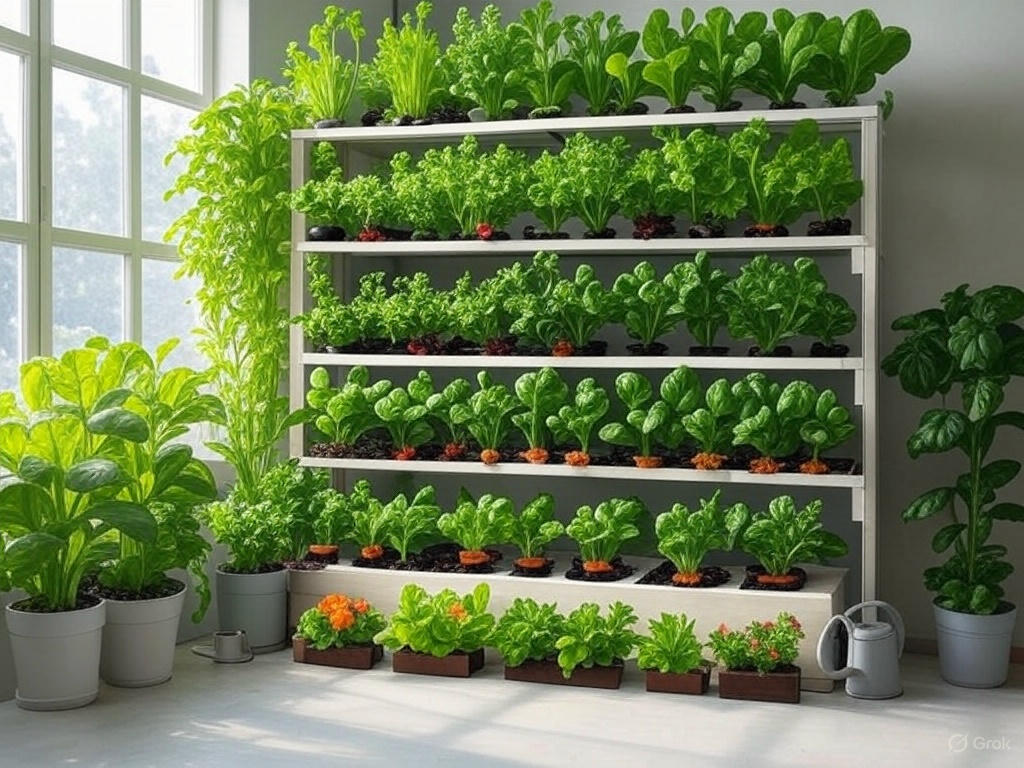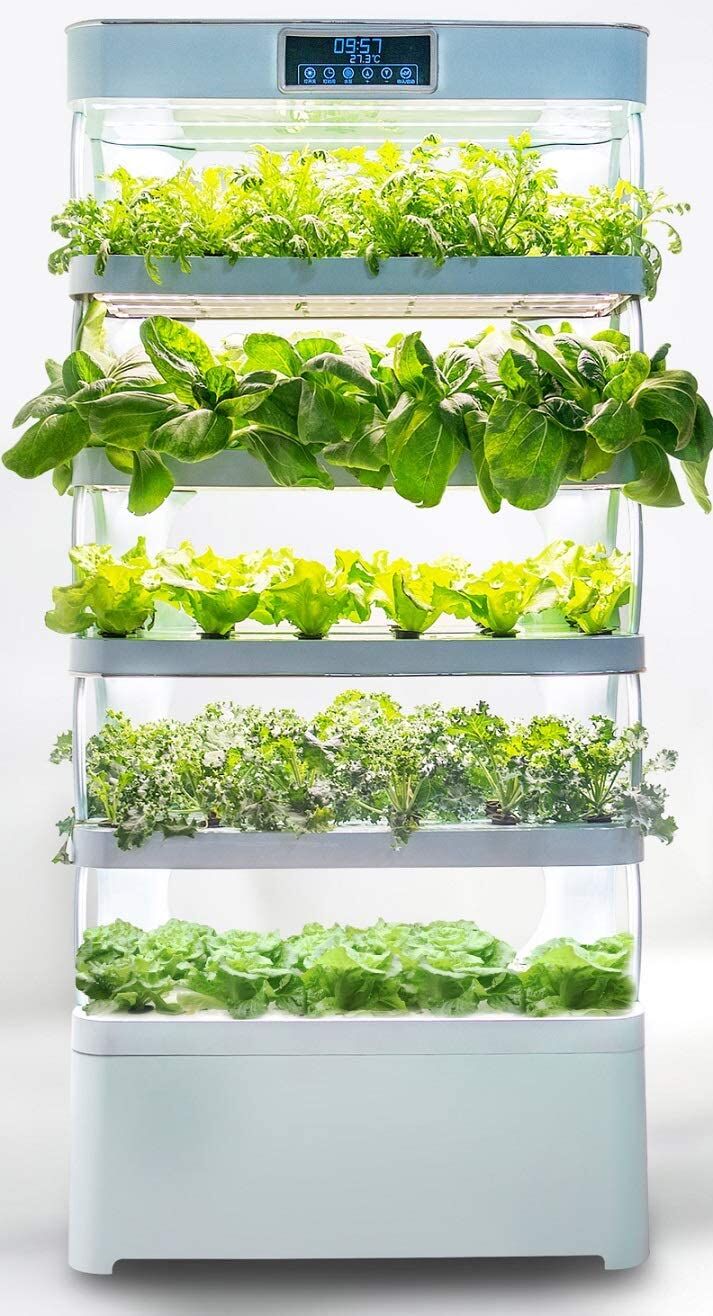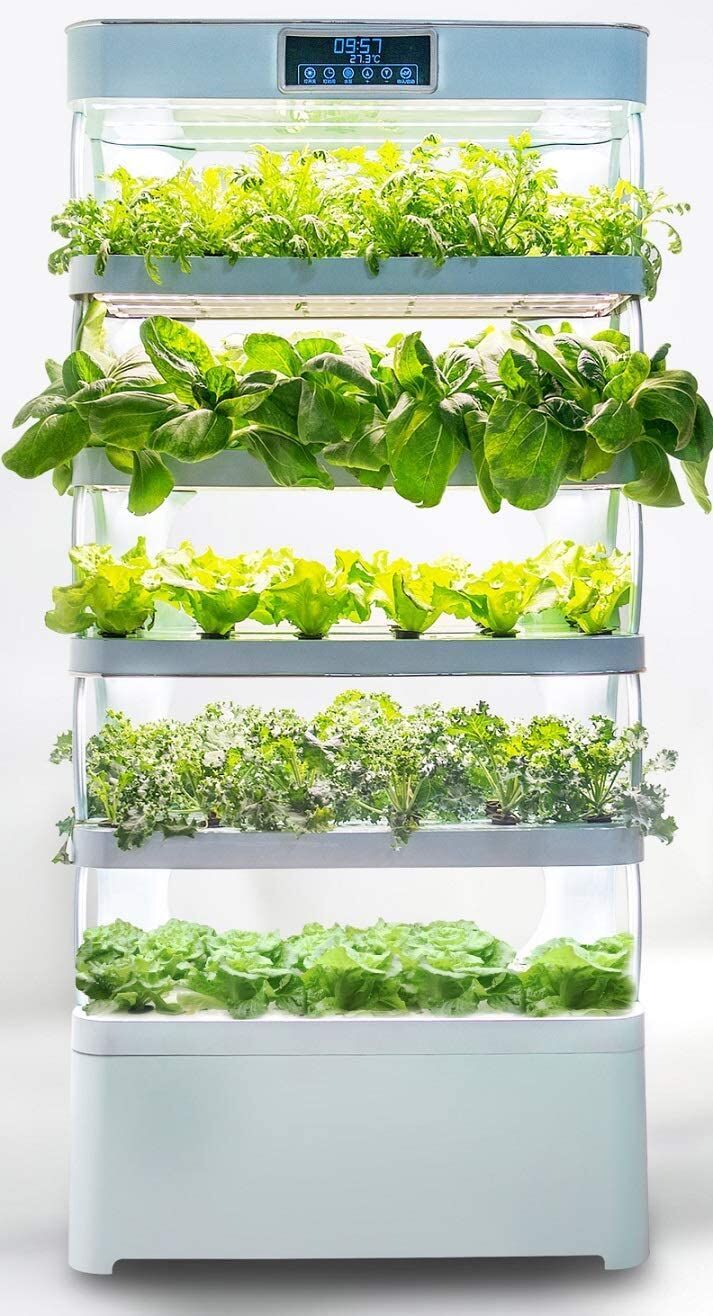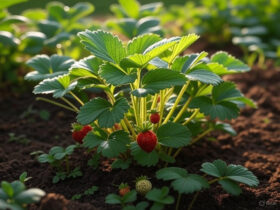Indoor vertical hydroponic gardens are changing the way we think about growing plants. They save space and provide fresh produce year-round.
Imagine having a garden inside your home, even in a small space. Indoor vertical hydroponic gardens make this possible. They use water, not soil, to grow plants. This method allows plants to grow faster and healthier. It’s perfect for apartments or homes without a yard.
Plus, you get fresh vegetables and herbs right at your fingertips. Indoor vertical hydroponic gardens are easy to set up and maintain. They are a smart choice for anyone looking to grow their own food. Ready to learn more about how to start your own indoor vertical hydroponic garden? Let’s dive in!
Benefits Of Vertical Gardening
Indoor vertical hydroponic gardens offer many benefits. These gardens use a vertical arrangement to grow plants. This method suits small spaces and urban areas. Growing plants in a hydroponic system means using water instead of soil. This setup ensures plants get the nutrients they need directly. Let’s explore the benefits of vertical gardening.
Space Efficiency
Indoor vertical hydroponic gardens save space. Traditional gardening needs a lot of land. Vertical gardening uses height instead of ground area. This is perfect for apartments or small homes.
Advantages of space efficiency in vertical gardening include:
- Growing more plants in less space
- Maximizing use of vertical space
- Easy access to all plants
Consider a 10 layers hydroponic vertical tower. This system allows you to grow multiple plants in a small area. Each layer holds plants, stacked on top of each other. This increases the number of plants you can grow without needing more floor space.
| Aspect | Traditional Gardening | Vertical Gardening |
|---|---|---|
| Space Required | Large area | Small area |
| Plant Density | Low | High |
| Accessibility | Harder to reach | Easy to reach |
A hydroponic vertical garden tower helps make the most of limited space. You can grow a variety of plants without needing a large garden. This is useful for city dwellers who want to grow their own food.
Year-round Growth
One of the biggest advantages of an indoor vertical hydroponic garden is year-round growth. You can grow plants regardless of the season. This means fresh produce all year.
- Consistent supply of fresh vegetables
- Less dependence on weather conditions
- Better control over plant environment
Using commercial vertical hydroponic systems ensures plants get the right amount of light, nutrients, and water. These systems use artificial lighting to replicate sunlight. This means plants can grow even in winter.
With hydroponic vertical farming systems, you can set the ideal conditions for plant growth. This includes temperature, humidity, and light. This control leads to healthier plants and higher yields.
In summary, year-round growth ensures a steady supply of fresh produce. You can enjoy healthy vegetables and herbs no matter the season.

Table of Contents
Types Of Hydroponic Systems
Indoor vertical hydroponic gardens are transforming how we grow plants. These systems maximize space and resource efficiency. Understanding the different types of hydroponic systems is key to finding the right fit for your needs. Each system has unique features and benefits.
Nutrient Film Technique
The Nutrient Film Technique (NFT) is a popular choice for many hydroponic gardeners. This system uses a shallow stream of nutrient-rich water flowing over plant roots. Plants are usually supported in a sloping channel.
Key features of NFT include:
- Constant flow of nutrients
- Minimal water and nutrient wastage
- Suitable for leafy greens and herbs
An indoor vertical hydroponic garden using NFT can look like a series of stacked channels. Each layer allows the nutrient film to flow over the roots. This setup is efficient and space-saving. It is perfect for a 10 layers hydroponic vertical tower or a hydroponic vertical garden tower.
Benefits of NFT:
| Benefit | Description |
|---|---|
| Continuous nutrient supply | Roots are always in contact with nutrients, ensuring steady growth. |
| Less water usage | Water is recirculated, reducing overall consumption. |
| Compact design | Ideal for indoor vertical hydroponic setups where space is limited. |
Commercial vertical hydroponic systems often use NFT because it is efficient and scalable. It supports high-density planting and rapid growth.
Deep Water Culture
Deep Water Culture (DWC) is another effective hydroponic system. In DWC, plant roots are submerged in a nutrient-rich water solution. An air pump provides oxygen to the roots through air stones.
Key features of DWC include:
- Constant nutrient access
- High oxygenation levels
- Suitable for a variety of plants, including larger crops
An indoor vertical hydroponic garden with DWC can feature multiple layers of water reservoirs. Each layer supports a set of plants. This method is suitable for a 10 layers hydroponic vertical tower. It provides ample space for root growth.
Benefits of DWC:
| Benefit | Description |
|---|---|
| High growth rate | Plants receive constant nutrients and oxygen, leading to faster growth. |
| Versatility | Can grow a wide range of plants, from leafy greens to fruiting crops. |
| Easy setup | Simple design makes it easy to build and maintain. |
Hydroponic vertical farming systems using DWC are efficient for both small-scale and commercial operations. They offer robust plant support and high yield potential.
Essential Equipment
Indoor vertical hydroponic gardens are becoming popular. They allow you to grow fresh vegetables and herbs in limited space. To set up a successful hydroponic vertical garden tower, you need some essential equipment. This equipment helps plants grow efficiently and healthily in a controlled environment. Let’s explore the essential tools you need for your indoor vertical hydroponic garden.
Grow Lights
Grow lights are crucial for an indoor vertical hydroponic garden. Without sunlight, plants need artificial light to photosynthesize. LED grow lights are popular due to their energy efficiency and long lifespan. They provide the full spectrum of light that plants need to grow.
Here are some key factors to consider when choosing grow lights:
- Light Spectrum: Ensure the lights offer both blue and red spectrums.
- Intensity: Adjustable brightness is important for different growth stages.
- Coverage Area: Make sure the lights cover all layers of your 10 layers hydroponic vertical tower.
Using a timer with your grow lights can help maintain a consistent light cycle. Plants need about 14-16 hours of light daily. Grow lights can be adjusted in height as plants grow taller. This ensures all plants receive adequate light.
Below is a table comparing different types of grow lights:
| Type | Energy Efficiency | Lifespan | Cost |
|---|---|---|---|
| LED | High | 50,000 hours | Moderate |
| Fluorescent | Moderate | 20,000 hours | Low |
| HID | Low | 10,000 hours | High |
Water Pumps
Water pumps are essential in hydroponic vertical farming systems. They ensure the nutrient solution circulates and reaches all plants. A reliable water pump helps maintain a constant flow of nutrients, which is vital for plant health.
When selecting a water pump, consider the following:
- Flow Rate: Choose a pump with a flow rate suitable for your hydroponic vertical garden tower.
- Durability: The pump should be durable to handle continuous use.
- Noise Level: A quiet pump is preferable for indoor use.
Submersible pumps are commonly used in commercial vertical hydroponic systems. They are efficient and easy to install. Ensure the pump is placed at the lowest point of the nutrient reservoir for optimal performance.
To maintain your water pump:
- Regularly clean the pump and filter to prevent clogs.
- Check for any signs of wear and tear.
- Replace parts as needed to ensure smooth operation.
Proper maintenance can extend the lifespan of your water pump and ensure your hydroponic vertical farming systems run smoothly.

Choosing The Right Plants
Indoor vertical hydroponic gardens are becoming more popular. These systems are efficient and space-saving. Choosing the right plants is key. The right selection ensures a productive and healthy garden. Let’s explore the best plants for your indoor vertical hydroponic garden.
Herbs And Greens
Herbs and greens thrive in an indoor vertical hydroponic garden. They are easy to grow and maintain. Common choices include:
- Basil: This herb grows well in hydroponic systems. It needs light and space.
- Lettuce: A great choice for beginners. Lettuce grows fast and takes little space.
- Spinach: This green is nutritious. Spinach prefers cooler temperatures.
- Mint: Mint spreads quickly. It is perfect for a 10 layers hydroponic vertical tower.
- Parsley: Another easy-to-grow herb. Parsley is rich in vitamins and minerals.
Herbs and greens need proper light and nutrients. Use a balanced nutrient solution. Ensure the light source mimics natural sunlight. Check the pH levels regularly. This keeps plants healthy and productive.
Using a hydroponic vertical garden tower maximizes space. It allows multiple layers of plants. Each layer gets the needed light and nutrients. This setup is ideal for both home and commercial vertical hydroponic systems.
Fruit-bearing Plants
Fruit-bearing plants can also thrive in hydroponic vertical farming systems. They need more space and care. Popular choices include:
- Strawberries: These fruits do well in hydroponic systems. They need light and air circulation.
- Tomatoes: Tomatoes need more space and support. Use cages or trellises.
- Cucumbers: These plants grow vertically. They need support and regular pruning.
- Peppers: Both sweet and hot peppers thrive in hydroponic setups. They need consistent light and warmth.
Fruit-bearing plants require more attention. Ensure proper pollination. Hand-pollinating can help. Regularly check for pests and diseases. Maintain a stable environment.
Commercial vertical hydroponic systems are ideal for fruit-bearing plants. They offer the needed space and support. These systems ensure high yields and quality produce.
Choosing the right plants for your indoor vertical hydroponic garden is crucial. Herbs and greens are easy to start with. Fruit-bearing plants need more care but are rewarding. With the right setup and maintenance, your garden will flourish.
Setting Up Your Garden
Setting up your indoor vertical hydroponic garden can be an exciting and rewarding project. This type of garden allows you to grow fresh vegetables and herbs all year round, regardless of the weather outside. Whether you’re using a 10 layers hydroponic vertical tower or another type of hydroponic vertical garden tower, the setup process is crucial to ensure your plants thrive. Let’s dive into the essential steps for getting your garden started.
Location Selection
Choosing the right location for your indoor vertical hydroponic garden is critical. The area should provide adequate light and be easily accessible for maintenance. Here are a few tips to help you select the best spot:
- Light: Your plants need sufficient light to grow. Place your garden near a window that receives plenty of sunlight or use grow lights.
- Space: Ensure there’s enough space for your hydroponic vertical garden tower. You should be able to move around it comfortably for planting, pruning, and harvesting.
- Humidity: The location should have a stable humidity level. Too much humidity can cause mold, while too little can dry out your plants.
- Temperature: Indoor vertical hydroponic gardens thrive in temperatures between 65°F and 75°F. Avoid places with extreme temperature fluctuations.
To help you decide, here’s a table summarizing the ideal conditions:
| Condition | Requirement |
|---|---|
| Light | 8-12 hours of sunlight or grow lights |
| Space | Enough room for a hydroponic vertical garden tower |
| Humidity | 50-70% |
| Temperature | 65°F – 75°F |
Installation Steps
Setting up your commercial vertical hydroponic systems involves several steps. Follow these to ensure a successful installation:
- Assemble the Tower: Begin by assembling your 10 layers hydroponic vertical tower according to the manufacturer’s instructions. Make sure all parts are securely connected.
- Add the Grow Medium: Fill the pots or holders with the appropriate grow medium. This can be rock wool, clay pellets, or another suitable material.
- Set Up the Water System: Connect the water pump and reservoir. Ensure the pump provides consistent water flow to all layers of the tower.
- Install the Lighting: Position your grow lights above the tower. Adjust the height so all plants receive even light distribution.
- Plant Your Seeds: Place seeds or seedlings in the grow medium. Make sure they are firmly planted to avoid dislodging during watering.
- Test the System: Turn on the water pump and lights. Check that water flows evenly and the lights cover all plants.
- Monitor and Adjust: Over the first few days, monitor plant growth and system performance. Adjust water flow, light intensity, and nutrient levels as needed.
With these steps, your hydroponic vertical farming systems should be ready to go. Regular monitoring and maintenance will help keep your garden healthy and productive.

Credit: www.trendhunter.com
Maintaining Your Hydroponic System
Maintaining your hydroponic system is vital for a successful indoor vertical hydroponic garden. Proper care ensures your plants grow healthy and strong. This guide covers the essential aspects of maintaining your system, focusing on nutrient management and pH levels. With these tips, your 10 layers hydroponic vertical tower or commercial vertical hydroponic systems will thrive.
Nutrient Management
Nutrient management is a key element in an indoor vertical hydroponic garden. Plants in hydroponic vertical garden towers rely on water with dissolved nutrients for growth. Without soil, these nutrients must be carefully monitored and maintained.
To manage nutrients effectively:
- Choose the right nutrient solution: Select a solution designed for hydroponic systems. It should contain all essential macro and micronutrients.
- Follow the recommended dosage: Over-fertilizing can harm plants. Always stick to the manufacturer’s instructions.
- Monitor nutrient levels regularly: Use an EC (Electrical Conductivity) meter to measure nutrient concentration. Aim for a balanced level that supports plant growth.
- Adjust nutrient solution as plants grow: Different growth stages require varying nutrient levels. Seedlings need less, while mature plants need more.
Here’s a simple table to help you understand the nutrient requirements at different growth stages:
| Growth Stage | Nutrient Requirement |
|---|---|
| Seedling | Low |
| Vegetative | Moderate |
| Flowering | High |
| Fruiting | Very High |
Using commercial vertical hydroponic systems can simplify nutrient management. These systems often come with automated nutrient delivery, ensuring consistent supply. Regularly check and refill the nutrient solution to keep your hydroponic vertical farming systems running smoothly.
Ph Levels
Maintaining the right pH level is crucial in hydroponic vertical garden towers. The pH level affects nutrient uptake. If it’s too high or too low, plants cannot absorb nutrients efficiently.
For optimal pH management:
- Test pH regularly: Use a pH meter or test kit. The ideal pH range for most plants is between 5.5 and 6.5.
- Adjust pH as needed: Use pH up or pH down solutions to correct imbalances. Add these solutions gradually and re-test until the desired pH is achieved.
- Keep records: Track your pH readings and adjustments. This helps identify trends and maintain a stable environment.
Here is a quick reference for pH adjustment:
| pH Level | Action |
|---|---|
| Below 5.5 | Add pH up solution |
| Above 6.5 | Add pH down solution |
Using a 10 layers hydroponic vertical tower or commercial vertical hydroponic systems, it’s easier to maintain consistent pH levels. Automated systems can integrate pH monitoring and adjustment, reducing manual effort.
Ensuring the right pH and nutrient balance will help your hydroponic vertical farming systems produce healthy and productive plants. Regular checks and adjustments are the keys to a flourishing indoor vertical hydroponic garden.
Common Challenges
Indoor vertical hydroponic gardens are innovative solutions for growing plants in small spaces. These systems use water and nutrients instead of soil, making them efficient and sustainable. But growing plants indoors with these systems can have challenges. Let’s explore some common issues faced by those using indoor vertical hydroponic gardens.
Pest Control
Even though indoor vertical hydroponic gardens are less prone to pests, they are not immune. Managing pests in a hydroponic system can be tricky. Here are some common pests and ways to control them:
- Aphids: These small insects can multiply quickly. Use a mild soap solution to spray the plants.
- Spider Mites: These tiny pests create webs. Regularly clean the plants with water to keep them at bay.
- Fungus Gnats: These insects thrive in moist environments. Use sticky traps to catch the adults.
Maintaining cleanliness is key. Regularly inspect the plants and the system. Remove any dead or decaying plant material. Use organic pest control methods to avoid harming the plants. An indoor vertical hydroponic garden, such as a 10 layers hydroponic vertical tower, requires consistent monitoring to ensure pests do not spread.
System Failures
System failures in a hydroponic setup can be devastating. These failures can disrupt the growth of plants. Here are some common issues and ways to address them:
| Issue | Solution |
|---|---|
| Power Outage | Use a backup generator or battery system to keep the pumps running. |
| Clogged Pumps | Regularly clean the pumps and filters to prevent blockages. |
| Nutrient Imbalance | Test the nutrient solution regularly and adjust as needed. |
In a hydroponic vertical garden tower, the water flow is crucial. Ensure all components are working correctly. Inspect the system daily. Commercial vertical hydroponic systems often have more complex setups. These systems need more attention. Regular maintenance prevents failures and ensures healthy plant growth.

Frequently Asked Questions
Are Indoor Hydroponic Gardens Worth It?
Yes, indoor hydroponic gardens are worth it. They provide fresh produce year-round. They save space and use less water. You can control the growing environment, leading to healthier plants. Plus, they reduce the need for pesticides.
What Are The 5 Disadvantages Of Hydroponics?
Hydroponics can be costly to set up. It requires constant monitoring. It relies on electricity. It can be susceptible to power outages. It demands technical knowledge.
Do Indoor Hydroponic Gardens Attract Bugs?
Indoor hydroponic gardens can attract bugs. Proper maintenance and cleanliness reduce the risk. Use pest control methods to prevent infestations.
What Are Three Plants That Are Not Recommended For Hydroponics?
Three plants not recommended for hydroponics are potatoes, carrots, and corn. These plants require extensive soil for root development and stability.
What Is An Indoor Vertical Hydroponic Garden?
An indoor vertical hydroponic garden is a space-saving method to grow plants without soil, using water and nutrients.
How Does A Vertical Hydroponic System Work?
Plants grow in vertical columns. Water and nutrients are pumped from a reservoir to the roots.
What Plants Can I Grow In A Hydroponic Garden?
Lettuce, herbs, spinach, strawberries, and tomatoes grow well in hydroponic gardens. Choose plants that thrive indoors.
Conclusion
Indoor vertical hydroponic gardens offer a practical solution for growing plants indoors. They save space and provide fresh produce year-round. These gardens are easy to set up and maintain. Perfect for small apartments or homes with limited outdoor areas. They help reduce food miles and support sustainable living.
With simple care, plants thrive and grow faster. This method of gardening is accessible to beginners and experts alike. Embrace the joy of gardening indoors. Enjoy the beauty and benefits of your own vertical hydroponic garden. Start your journey towards a greener lifestyle today.










Leave a Reply